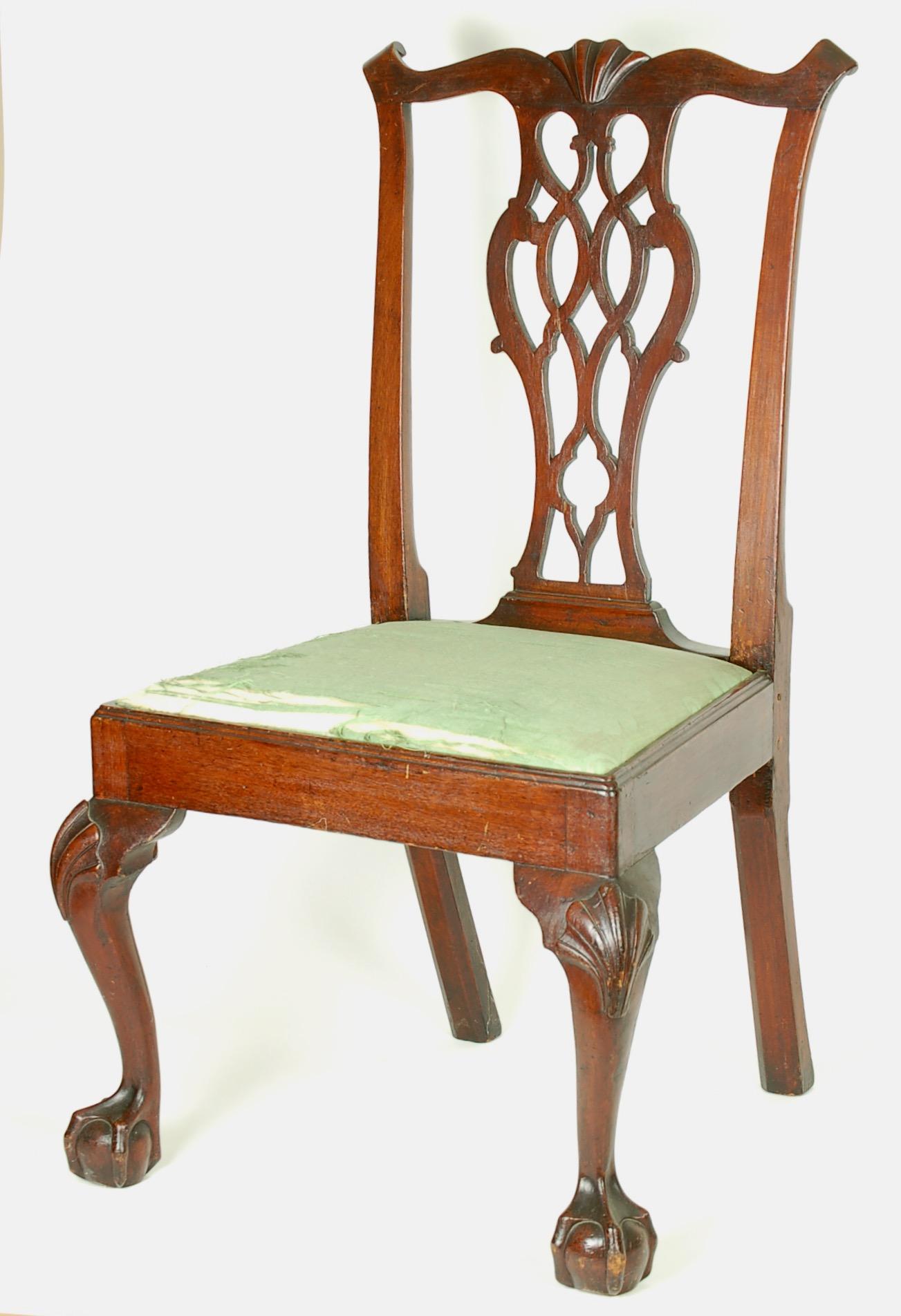Side chair
1770-1790
Measurements
38-1/8 in x 22-5/8 in x 20-1/2 in
Materials
Walnut; white cedar (corner blocks), cherry (slip seat)
Credit Line
Historic Odessa Foundation, gift of H. Rodney Sharp
Accession Number
1958.3275
Inscription
An upside down “V” is chiseled into the inside of the rear seat rail and into the slip seat frame.
Condition Notes
The slip seat frame has been sanded on the underside of one side (affecting about two-thirds of the surface), probably to level it in the seat rabbet. The accession no. of the chair and "Library" has been written in pencil on the sanded surface. Evidence of screw holes indicates that iron braces once secured the inside corners of the seat frame.
Provenance
Ex coll. H. Rodney Sharp
Comments
The cabriole legs with carved shells on the knees and claw-and-ball feet, pierced splat, and eared crest rail of this side chair resemble seating made in Philadelphia in the years around the Revolutionary War. Structural features, such as stump rear legs and side rails tenoned through the rear stiles also conform to Philadelphia area fabrication. However, a few details separate the chair from the urban furniture-making community, placing its origin instead somewhere on the periphery. The specific splat pattern resembles many interlacing examples from Philadelphia, but this particular design is more congested across the middle than those and has larger-than-normal piercings at the bottom; it simply differs. The top edges of the seat rails are molded in a three-part stepped profile, which suggests a time of origin after about 1770. The rear legs, in contrast, are octagonal rather than oval in cross-section, suggesting an earlier timeframe. The rear legs are canted to the rear but are straight, not gently curved as are urban examples.
